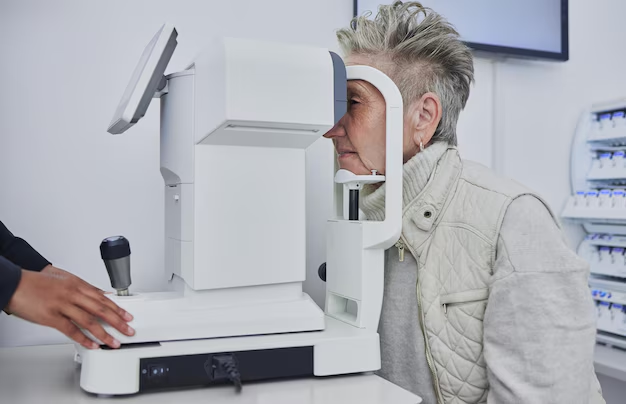Discovering the Latest Advancements in Cataract Surgery Lenses
Cataract surgery has long been a standard procedure to rejuvenate sight, offering millions relief from the cloudiness that once obscured their vision. Yet, much like technology, this field is ever-evolving, continuously striving to offer better outcomes for patients. One of the most exciting areas of development is intraocular lenses, commonly known as IOLs, which are essential in restoring and enhancing sight post-surgery. So, what's new in the world of cataract surgery lenses? Let’s delve into the latest innovations and what they mean for patients considering this significant life-enhancing surgery.
Understanding Cataract Surgery and Its Lenses
The Basics of Cataract Surgery
Before exploring the newest lenses available, it’s crucial to understand what cataract surgery entails. Cataracts cause the lens of the eye to become opaque, leading to blurred and cloudy vision. During cataract surgery, this natural lens is removed and replaced with an artificial one, called an intraocular lens (IOL), which helps restore clear vision.
The Role and Evolution of Intraocular Lenses
Initially, IOLs were designed to offer basic vision correction, typified by monofocal lenses that provide a single plane of focus, usually for distance. Over time, advancements in lens technology have introduced multifocal and accommodating lenses that allow patients to see at differing distances, thus reducing dependency on glasses for near and intermediate vision tasks.
What's New in Cataract Surgery Lenses?
Enhanced Depth of Focus Lenses
One of the newer categories of IOLs gaining attention are extended depth of focus (EDOF) lenses. These lenses bridge the gap between multifocal and monofocal lenses, by elongating the focus range, offering clearer vision across varying distances while minimizing visual disturbances such as glare and halos.
Toric Lenses for Astigmatism
For those with astigmatism, toric IOLs are transforming outcomes. They cater specifically to the unique curvature of the cornea found in such patients, significantly improving vision without the need for corrective glasses or contact lenses post-surgery.
Light-Adjustable Lenses
An exciting development is light-adjustable lenses which allow for post-surgical adjustments. After implantation, patients undergo non-invasive UV light treatments that fine-tune the lens power to achieve optimal vision correction, offering a highly personalized approach.
Multifocal and Trifocal Lenses
Multifocal IOLs have been further refined into trifocal lenses, enhancing the ability to see objects at near, intermediate, and far distances. Trifocal lenses address some of the limitations seen with traditional multifocal designs, promoting fewer visual side effects.
Blue Light Filtering Lenses
With increasing digital screen use, some new IOLs incorporate blue light filtering technology. These lenses aim to reduce blue light exposure, potentially minimizing strain and protecting the eyes from potential damage associated with prolonged screen time.
What to Consider When Choosing the Latest Lens?
Individual Needs and Lifestyle
Selecting the right IOL isn't merely about the technology itself but aligning it with your lifestyle and visual needs. Are you someone who enjoys reading or working on a computer? Perhaps you drive extensively at night or thrive in active outdoor environments. Different lenses cater to varying visual requirements, and having an open discussion with your ophthalmologist can target the best match.
Potential Side Effects
Despite the advancements, some lenses may still present issues such as glare or halos, particularly under low light conditions. Evaluating the potential for such effects in various lens types is necessary to manage expectations and satisfaction post-surgery.
Cost Considerations
While the newest IOLs might offer fantastic benefits, they often come at an increased cost relative to standard lenses. Understanding the coverage provided by insurance plans and weighing it against the enhanced features and potential lifestyle improvement is crucial.
The Future of Cataract Surgery Lenses
Customization and Smart Technology
The ongoing trend in ophthalmic technology is personalization. Future iterations of IOLs may incorporate smart technology, offering real-time visual adjustments or even connectivity to digital devices for monitoring and enhancements.
Biocompatibility Improvements
Another area gaining traction is the focus on biocompatibility enhancements, ensuring lenses cause minimal irritation and perform optimally over a lifetime.
Quick Reference: What to Keep in Mind When Looking at New Lens Options
🌟 Enhanced Vision Range: Consider EDOF lenses for a balance between distance and close vision without glasses.
⚡ Astigmatism Solution: Toric lenses specifically cater to astigmatic needs for clearer, uncorrected vision.
🔧 Post-Operative Adjustment Capability: Light-adjustable lenses offer fine-tuning after surgery for personalized precision.
🌐 Night Driving and Digital Use: Trifocal and blue light filtering lenses can mitigate night glare and reduce blue light exposure.
💲 Weighing Costs and Insurance: Newer lens options may carry additional costs; review and compare your coverage plans.
In summary, while cataract surgery remains a standard procedure, the lenses used continue to evolve, enhancing patient outcomes significantly. By opting for the latest lens technology, patients can potentially enjoy a fuller, more vibrant post-surgical vision experience aligned with their personal and professional lives. As always, discussing these options with a qualified eye care professional will provide insights tailored to your specific situation. With the continued advancements in medical technology, the future indeed looks clearer and brighter for those needing cataract surgery.
